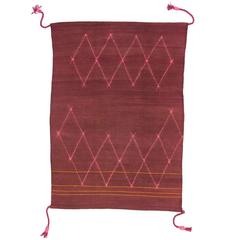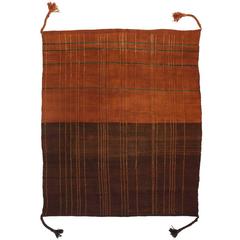Maroc Carpet
Recent Sales
21st Century and Contemporary Moroccan Modern Moroccan and North African...
Wool
21st Century and Contemporary Moroccan Modern Moroccan and North African...
Wool
21st Century and Contemporary Moroccan Modern Moroccan and North African...
Wool
21st Century and Contemporary Moroccan Modern Moroccan and North African...
Wool
Vintage 1970s Swiss Moroccan and North African Rugs
Wool
Vintage 1970s Moroccan Mid-Century Modern Moroccan and North African Rugs
20th Century French Tribal Books
Paper
21st Century and Contemporary Moroccan Modern Moroccan and North African...
Wool
21st Century and Contemporary Moroccan Modern Moroccan and North African...
Wool
21st Century and Contemporary Moroccan Modern Moroccan and North African...
Wool
21st Century and Contemporary Moroccan Modern Moroccan and North African...
Wool
21st Century and Contemporary Moroccan Modern Moroccan and North African...
Wool
21st Century and Contemporary Moroccan Modern Moroccan and North African...
Wool
21st Century and Contemporary Moroccan Modern Moroccan and North African...
Wool
21st Century and Contemporary Moroccan Modern Moroccan and North African...
Wool
21st Century and Contemporary Moroccan Modern Moroccan and North African...
Wool
21st Century and Contemporary Moroccan Modern Moroccan and North African...
Wool
21st Century and Contemporary Moroccan Modern Moroccan and North African...
Wool
21st Century and Contemporary Moroccan Modern Moroccan and North African...
Wool
Maroc Carpet For Sale on 1stDibs
How Much is a Maroc Carpet?
Jan Kath for sale on 1stDibs
With their balance of intricate traditional patterns and modern minimalist flourishes, Jan Kath rugs and carpets are widely popular with design enthusiasts and reflect his own desire to bring comfort, warmth and character back into the contemporary home. "Nobody feels comfortable in clinically styled apartments with highly polished concrete floors," he has said of his efforts.
World-renowned for his eclectic and colorful designs as well as his adherence to ancient hand-knotting techniques, Kath’s rugs have graced the floors of celebrity homes, museums and properties occupied by luxury brands including Louis Vuitton and Tiffany & Co.
Born in 1972 in the vibrant city of Ruhr in Northern Germany, Kath was introduced to the world of carpets when he was just a baby. Three generations of his family had worked as antique carpet suppliers — a trade that Kath initially rejected. However, when he was traveling in his early twenties, fate interceded. He was getting close to running out of money while he was still on the road and ran into one of his father’s carpet suppliers in Kathmandu, Nepal, and asked for a job working in his carpet factory there. He spent several years working alongside local carpet weavers, learning the ins and outs of how the carpets were handmade. Kath eventually took over the factory and began creating his own designs.
Inspired both by his travels through Asia and the Middle East, as well as by the beauty of his home in Ruhr, Kath’s carpets quickly developed a signature style. Spurning a formal education in design, his purely intuitive technique often rejects the rules of design to celebrate imperfect patterns, eclectic colors and unconventional motifs. His carpets are loomed in India, Morocco, Nepal, Thailand and Turkey.
Kath’s designs, which have been likened to antique and vintage Persian rugs over the years, are all created using centuries-old hand-knotting techniques. Working with local creators at his plant in Kathmandu, Kath aims to preserve ancient carpet-making practices by applying them to modern works of art, creating unique pieces imbued with the character of their makers.
Jan Kath has received numerous awards, such as the Carpet Design Award and the Red Dot Design Award, and his carpets have garnered international renown. His works have been exhibited at the Art Museum Riga Bourse in Latvia, the Museum für Angewandte Kunst in Frankfurt, Germany, and elsewhere. In 2014, he partnered with friend Jenni Finlay to open a showroom, Finlay and Kath Inc., in Vancouver, Canada.
Find Jan Kath carpets and rugs on 1stDibs.
A Close Look at Modern Furniture
The late 19th and early 20th centuries saw sweeping social change and major scientific advances — both of which contributed to a new aesthetic: modernism. Rejecting the rigidity of Victorian artistic conventions, modernists sought a new means of expression. References to the natural world and ornate classical embellishments gave way to the sleek simplicity of the Machine Age. Architect Philip Johnson characterized the hallmarks of modernism as “machine-like simplicity, smoothness or surface [and] avoidance of ornament.”
Early practitioners of modernist design include the De Stijl (“The Style”) group, founded in the Netherlands in 1917, and the Bauhaus School, founded two years later in Germany.
Followers of both groups produced sleek, spare designs — many of which became icons of daily life in the 20th century. The modernists rejected both natural and historical references and relied primarily on industrial materials such as metal, glass, plywood, and, later, plastics. While Bauhaus principals Marcel Breuer and Ludwig Mies van der Rohe created furniture from mass-produced, chrome-plated steel, American visionaries like Charles and Ray Eames worked in materials as novel as molded plywood and fiberglass. Today, Breuer’s Wassily chair, Mies van der Rohe’s Barcelona chair — crafted with his romantic partner, designer Lilly Reich — and the Eames lounge chair are emblems of progressive design and vintage originals are prized cornerstones of collections.
It’s difficult to overstate the influence that modernism continues to wield over designers and architects — and equally difficult to overstate how revolutionary it was when it first appeared a century ago. But because modernist furniture designs are so simple, they can blend in seamlessly with just about any type of décor. Don’t overlook them.
Finding the Right Moroccan-rugs for You
Antique and vintage Moroccan rugs serve as an exceptional piece of decor. Whether it’s to tie your bedroom together or to add a dazzling array of colors and graphically provocative shapes and other elements to your living room wall, there’s increased demand for all types of Moroccan tribal rugs, especially as bohemian, global and eco styles are on the rise and because tapestries and wall hangings are definitely cool again.
Travelers and interior design lovers from all over the world are big fans of the complex geometric patterns and bold color palettes that we typically associate with rustic, natural Moroccan and North African rugs.
In the West, the current infatuation with handwoven vintage Moroccan tribal rugs stretches to the mid-20th century. Then, designers such as Alvar Aalto, Frank Lloyd Wright and Le Corbusier offset austere interiors with vibrant and alluring mid-century modern Moroccan rugs. (Le Corbusier integrated these rugs in his designs for Villa La Roche in Paris, while Frank Lloyd Wright’s Fallingwater in Pennsylvania is also home to distinctive Moroccan floor coverings.)
Moroccan rugs date back to the Paleolithic era, when Berber tribes, which comprised many different members of an ethnic group native to North Africa, would weave these textiles with intricate images and symbols. Traditionally, Moroccan tribal weavings were made exclusively by women and solely for personal use. Dense pile rugs served not only as floor coverings but as mattresses, seating and even blankets in the winter months.
The Moroccan rug hasn’t survived this long merely because of its usefulness. These stunning works take at least two to three weeks to weave, and each woman weaves the story of her life into the design. They are filled with symbolism and vary greatly depending on the locale where they were woven. In this way, part of the profound beauty of traditional Moroccan rugs lies in their historical and cultural significance.
One of the most widely loved styles of Moroccan rugs comes from the Beni Ourain tribes, a network of nearly two dozen individual tribes in the mountainous Middle Atlas region.
Vintage Beni Ourain rugs are woven from undyed, natural wool. The textures, imperfections and asymmetrical lines, which can’t be reproduced with mass production methods, as well as the neutral tones and understated geometry have endeared interior designers to these works for ages. In comparison to the spare Beni Ourain rugs, a more heavily decorated, widely colorful option can be found in Azilal Moroccan rugs, which contrast wonderfully with the rich, dark wood tones and clean lines that characterize mid-century modern furniture.
The collection of antique and vintage rugs and carpets on 1stDibs features a wide range of extraordinary Moroccan and North African rugs including Beni Ourain rugs, Azilal rugs, kilims and more.

